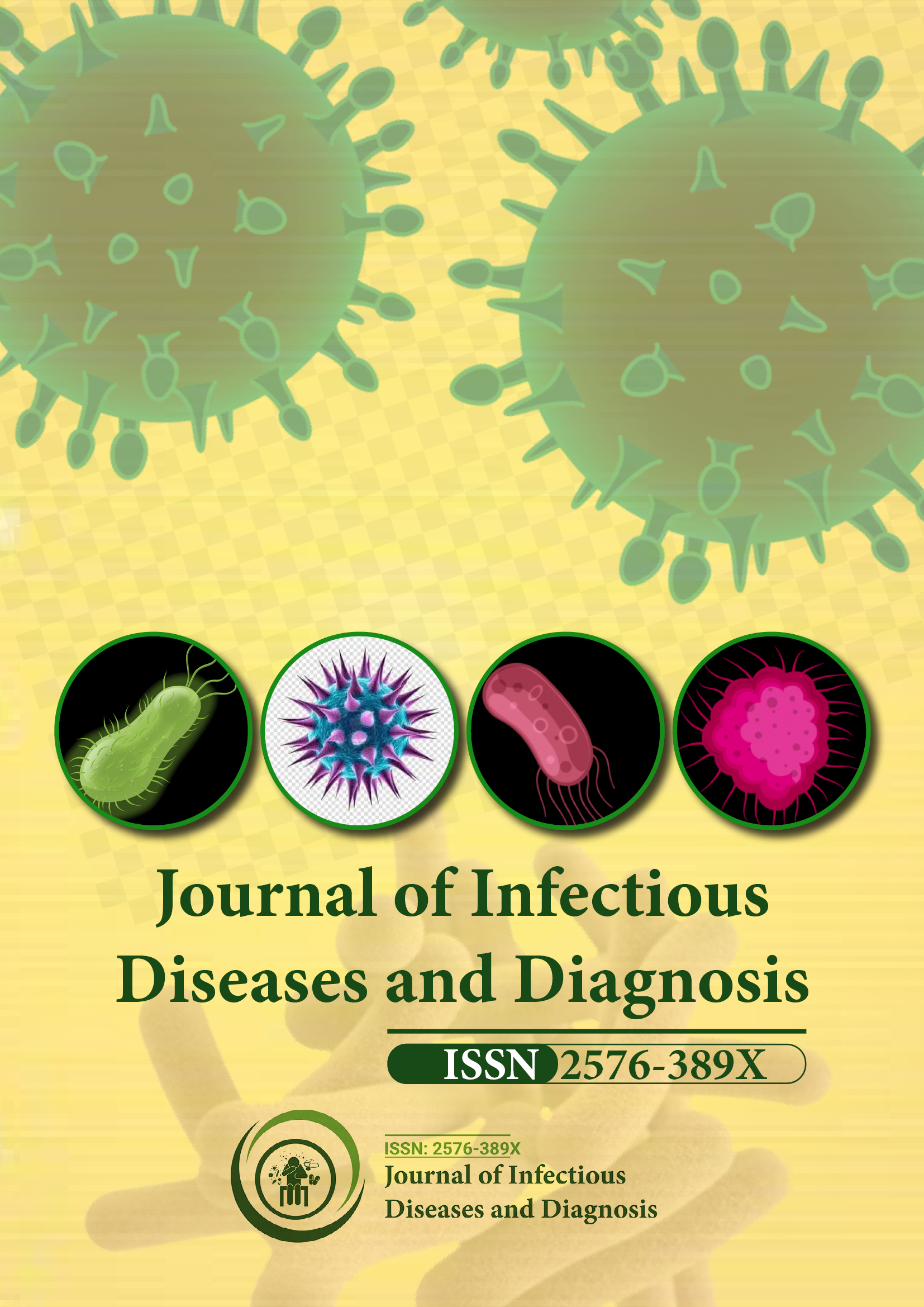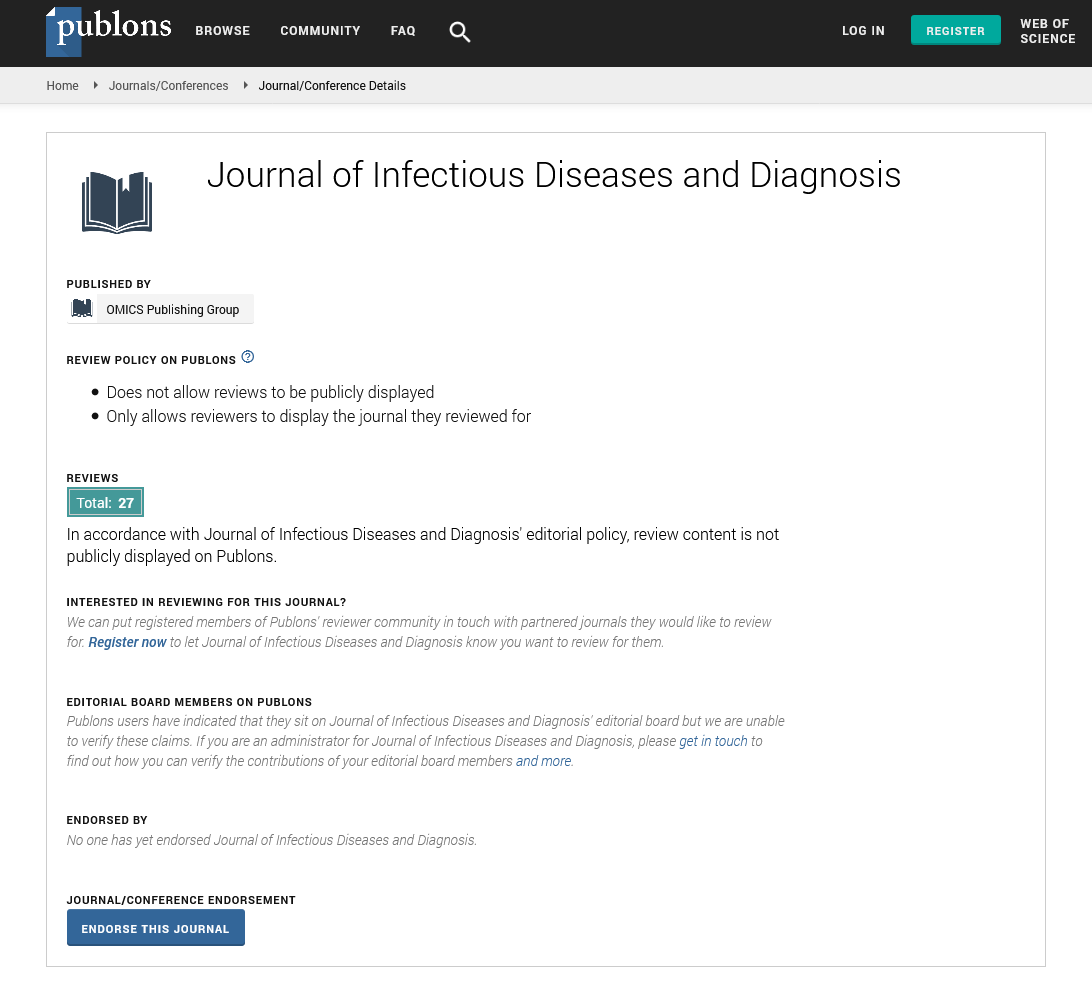Indexed In
- RefSeek
- Hamdard University
- EBSCO A-Z
- Publons
- Euro Pub
- Google Scholar
Useful Links
Share This Page
Journal Flyer

Open Access Journals
- Agri and Aquaculture
- Biochemistry
- Bioinformatics & Systems Biology
- Business & Management
- Chemistry
- Clinical Sciences
- Engineering
- Food & Nutrition
- General Science
- Genetics & Molecular Biology
- Immunology & Microbiology
- Medical Sciences
- Neuroscience & Psychology
- Nursing & Health Care
- Pharmaceutical Sciences
Commentary - (2025) Volume 10, Issue 3
Antimicrobial Resistance Patterns in Community-Acquired Urinary Tract Infections: A Multi-Center Surveillance Study
Ashen Cameroon*Received: 30-Apr-2025, Manuscript No. JIDD-25-29294; Editor assigned: 02-May-2025, Pre QC No. JIDD-25-29294 (PQ); Reviewed: 16-May-2025, QC No. JIDD-25-29294; Revised: 23-May-2025, Manuscript No. JIDD-25-29294 (R); Published: 30-May-2025, DOI: 10.35248/2576-389X.25.10.329
Description
Urinary tract infections are among the most frequent bacterial infections globally, affecting individuals across age groups, with women being disproportionately impacted. While many of these infections are mild and manageable with oral antibiotics, the steady rise in antimicrobial resistance has made treatment more difficult. Community-Acquired Urinary Tract Infections (CAUTIs), once largely predictable in their causative organisms and susceptibility patterns, are now showing complex resistance trends that complicate empirical therapy. This study was designed to assess current resistance patterns across multiple centers and identify emerging threats to effective treatment.
The surveillance was carried out in five urban and semi-urban tertiary hospitals across three states in India over a period of 12 months. A total of 1,520 adult patients who presented with symptoms of uncomplicated CA-UTI and had no recent hospitalization history were enrolled. Midstream urine samples were collected from each patient and processed using standard microbiological methods. Bacterial identification was performed using automated systems and antimicrobial susceptibility testing was carried out following Clinical and Laboratory Standards Institute (CLSI) guidelines.
Of the samples, 1,302 showed significant bacteriuria and were included in the analysis. Escherichia coli accounted for 72% of the isolates, followed by Klebsiella pneumoniae at 17% and smaller numbers of Proteus, Enterococcus and Pseudomonas species. Among E. coli isolates, resistance to ciprofloxacin was the highest at 71%, followed by co-trimoxazole at 54% and cefixime at 48%. Sensitivity was better preserved for nitrofurantoin (resistance 21%) and fosfomycin (resistance 12%). Klebsiella isolates showed even higher resistance to third-generation cephalosporins, with 59% being non-susceptible to cefotaxime.
Extended-Spectrum Beta-Lactamase (ESBL) production was confirmed in 34% of all isolates, with a higher proportion seen in Klebsiella (45%) compared to E. coli (30%). These ESBL-producing strains were mostly resistant to beta-lactam and fluoroquinolone groups but remained susceptible to carbapenems. However, 5% of isolates showed resistance to at least one carbapenem, raising Age-related analysis revealed that resistance was more pronounced among elderly patients (above 65 years), especially in those with recurrent episodes or those who had used antibiotics in the previous six months. Among women of reproductive age, nitrofurantoin retained excellent efficacy, suggesting it could remain the empirical drug of choice in uncomplicated cases.
Regional differences in resistance were also apparent. Urban hospitals in metropolitan areas recorded significantly higher resistance to fluoroquinolones and third-generation cephalosporins. This may be attributed to higher outpatient antibiotic consumption and widespread over-the-counter access in cities. In contrast, semiurban hospitals showed relatively lower resistance but still recorded ESBL positivity in over 25% of cases.
The data highlight a concerning prevalence of Multidrug-Resistant (MDR) strains, defined as resistance to three or more antibiotic classes. These figures suggest that even community settings are becoming reservoirs for resistant organisms that were previously confined to hospitals.
The prescribing patterns in the participating centers were also evaluated. It was noted that empirical use of fluoroquinolones and beta-lactams remained common, despite known resistance. Physicians cited lack of real-time culture reports and patient noncompliance with alternative regimens as reasons for continuing with these agents. In response to the surveillance findings, several hospitals initiated revisions in their empirical guidelines and started routine antibiogram dissemination to prescribers.
This study also emphasized the value of targeted public education. A short questionnaire administered to a subset of 200 patients revealed poor awareness about antibiotic use and resistance. Over 60% had taken antibiotics in the past year without a prescription and a third admitted to stopping treatment early once symptoms improved. These behaviors contribute directly to resistance development.
From a laboratory standpoint, establishing local antibiograms and performing regular resistance tracking proved feasible and informative. All five centers reported that integration of antibiogram data into routine patient management helped reduce repeat infections and improved treatment outcomes. The study also facilitated the identification of emerging clones and resistance genes through molecular analysis of selected MDR isolates, although these data were outside the scope of this report.
The increasing prevalence of resistant organisms in CA-UTIs necessitates urgent changes in diagnostic and treatment approaches. Routine use of culture and sensitivity testing, even in outpatient settings, should be encouraged. Point-of-care diagnostic tools and standardized reporting formats can further support clinicians in making timely and appropriate decisions.
In conclusion, this multi-center surveillance study reveals that antimicrobial resistance in community-acquired urinary tract infections is widespread and evolving. High resistance to commonly used antibiotics, especially fluoroquinolones and cephalosporins, has diminished their value as first-line therapies. The continued presence of ESBL and MDR strains in outpatient environments indicates a shift in the epidemiology of resistance. There is a pressing need for revised treatment protocols, informed by local resistance data, to guide empirical therapy. Promoting judicious antibiotic use, educating patients on treatment compliance and ensuring access to effective diagnostics are key steps in addressing this growing concern. Through coordinated surveillance and tailored interventions, healthcare systems can better manage the threat of resistant infections in the community.
Citation: Cameroon A (2025). Antimicrobial Resistance Patterns in Community-Acquired Urinary Tract Infections: A Multi-Center Surveillance Study. J Infect Dis Diagn. 10:329.
Copyright: © 2025 Cameroon A. This is an open-access article distributed under the terms of the Creative Commons Attribution License, which permits unrestricted use, distribution, and reproduction in any medium, provided the original author and source are credited.

